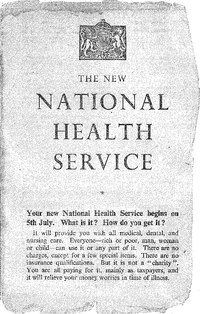
Photo from wikipedia
Since the inception of the COVID-19 pandemic, historians have been frequent commentators, searching high and low through their research files, scholarly articles, and books to find the closest analogs in… Click to show full abstract
Since the inception of the COVID-19 pandemic, historians have been frequent commentators, searching high and low through their research files, scholarly articles, and books to find the closest analogs in the history of past pandemics to the current crisis Over recent decades, the field of public health history has been transformed as it has addressed the history of pandemics, centering attention on powerful social and structural forces that create unequal vulnerabilities to death and disease, as well as greater attention to the significant obstacles that stand in the way of effective responses 2 In the current issue, Navarro and Markel dive back into the 1918 pandemic in their article "Politics, Pushback, and Pandemics: Challenges to Public Health Orders in the 1918 Influenza Pandemic" (p 416) [ ]nihilistic views of public health are familiar to historians who are well versed in the arguments and rationalizations that disease and disparities are but an aspect of natural selection and biological determinism 6 The historian's responsibility is to draw attention to these specious and historically situated arguments and to demonstrate how they reflect the particular social, cultural, and political forces oftheirtime
Journal Title: American journal of public health
Year Published: 2021
Link to full text (if available)
Share on Social Media: Sign Up to like & get
recommendations!